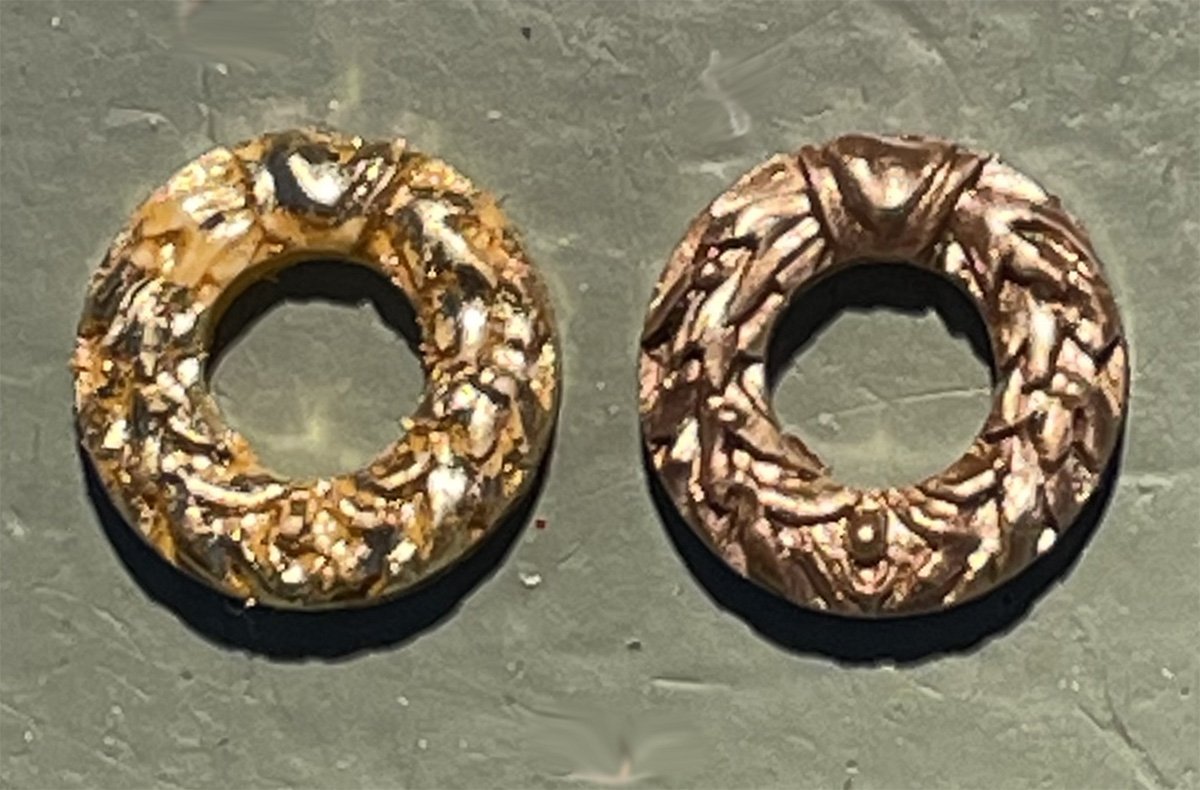-
Posts
13,289 -
Joined
-
Last visited
Content Type
Profiles
Forums
Gallery
Events
Everything posted by druxey
-
Bowlines (literally 'bow lines') normally lead forward, at least in English practice. The line for the fore course leads forward to a block hooked to the aft side of the bowsprit cap, then aft to belay at the forecastle. The main course bowline also leads forward. The English belayed it at the fore topsail sheet bitts forward of the fore mast. In your diagram it appears to belay inside the bow bulwark, presumably on a pinrail. Hopefully this is of some help!
-

Bower anchor project by Sizzolo
druxey replied to Sizzolo's topic in - Build logs for subjects built 1751 - 1800
I agree that the worming looks a little thick. -

Bower anchor project by Sizzolo
druxey replied to Sizzolo's topic in - Build logs for subjects built 1751 - 1800
The gap in the stock was for drainage as an air gap - not for shrinkage. Looks good. -
I go away for a month and you've completed the model, Ab? Well played, sir! Interesting reading your comments on gold leaf vs gold paint. I recently had the same issue and felt that real leaf was too reflective and gaudy. Also, the detail was lost. However, the client insisted that the dolphin stands be gilded. Bling!
-
No matter how good the plans or offsets, it is wise to completely re-draught before you begin. An important step to take to 'prove' a hull fair is by proof diagonals, which you can think of as angled waterlines. These diagonals, when projected on the half breadth, should always form convex lines. If there is a wobble or inflexion in them, it shows where you need to adjust sections andwaterlines. If a proof diagonal falls outside the half breadth amidships, it does not mean you have made an error! The distance along a diagonal is greater than across a waterline.
-
Nice talk, m'Lord! Thank you for posting this.
-

Planking problems
druxey replied to Mrgj24's topic in Building, Framing, Planking and plating a ships hull and deck
Please read the 'pinned' articles on planking: More> Modeling techniques > Planking. These will explain everything for you. -
Too bad you didn't use line from Ropes of Scale or similar - no fuzz on those. Would you consider upgrading? The rest of the model deserves it!
-

L'Amarante by marsalv - 1:36 - POF
druxey replied to marsalv's topic in - Build logs for subjects built 1501 - 1750
The more-or-less square door in post #117 looks as if it can open unimpeded. This seems realistic. -
Huh? I just put in the same search and got 28 hits. See: https://www.rmg.co.uk/collections/objects/search/Planking expansion#!cbrowse Try the link. The 24' 0" figure was from Goodwin, which I take to be average. This might vary slightly, depending on frame spacing, of course. That would dictate actual lengths.
About us
Modelshipworld - Advancing Ship Modeling through Research
SSL Secured
Your security is important for us so this Website is SSL-Secured
NRG Mailing Address
Nautical Research Guild
237 South Lincoln Street
Westmont IL, 60559-1917
Model Ship World ® and the MSW logo are Registered Trademarks, and belong to the Nautical Research Guild (United States Patent and Trademark Office: No. 6,929,264 & No. 6,929,274, registered Dec. 20, 2022)
Helpful Links
About the NRG
If you enjoy building ship models that are historically accurate as well as beautiful, then The Nautical Research Guild (NRG) is just right for you.
The Guild is a non-profit educational organization whose mission is to “Advance Ship Modeling Through Research”. We provide support to our members in their efforts to raise the quality of their model ships.
The Nautical Research Guild has published our world-renowned quarterly magazine, The Nautical Research Journal, since 1955. The pages of the Journal are full of articles by accomplished ship modelers who show you how they create those exquisite details on their models, and by maritime historians who show you the correct details to build. The Journal is available in both print and digital editions. Go to the NRG web site (www.thenrg.org) to download a complimentary digital copy of the Journal. The NRG also publishes plan sets, books and compilations of back issues of the Journal and the former Ships in Scale and Model Ship Builder magazines.





